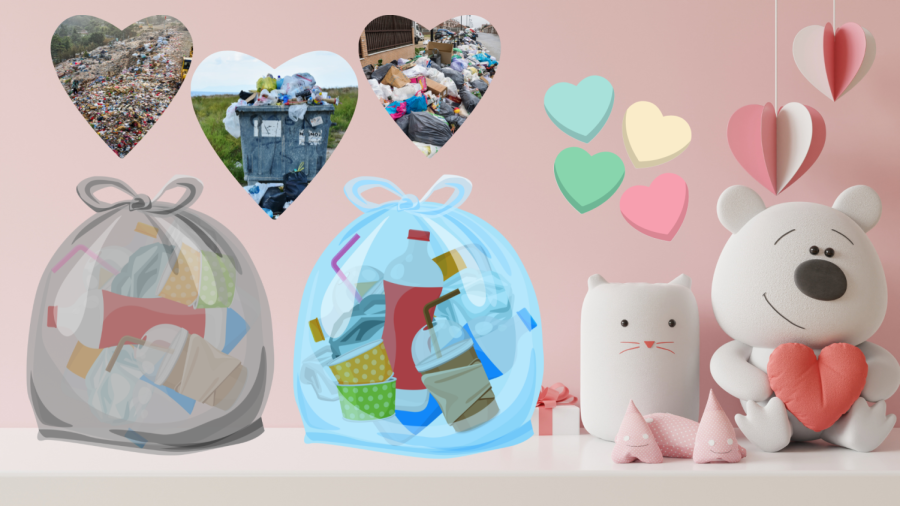Waste-dumped by love: the hidden costs behind love on Valentine’s Day
Spending big on Valentine’s Day has reached a new high, with Americans expected to spend $25.9 billion this year. However, most consumers overlook how the majority of their flowers, chocolate boxes, and plastic packaging will bypass recycling straight into landfills, exacerbating environmental pollution and waste.
Roses are red, violets are blue, but they all go to waste, when Valentine’s Day is through. As love is in the air, store shelves are fully stocked with red roses, chocolate hearts, and romantic decor to stir consumer hearts. They’re no doubt effective–in an annual survey released by the National Retail Federation and Prosper Insights & Analytics, American consumers are projected to spend nearly $26 billion on Valentine’s Day this year.
While lovebirds across the nation plan to buy a plethora of candy, greeting cards, and flowers (the three most popular gift choices) for their significant others, many are unaware that their overwhelming consumerism for love eventually spirals into a massive, potential dump of environmental waste.
When customers dispose of roses, plastic packaging, and chocolate boxes, a majority of the waste cannot be recycled and heads straight to the landfills.
Couples often feel obligated to purchase more gifts or go all-out on date spending to prove their mutual love. In fact, 52% of consumers expect to spend an average of $192.80 this Valentine’s Day.
“Even when I want to make (my partner) something and get creative instead of just buying a product, a lot of arts and craft stuff requires material as well, so I spend on Valentine’s Day either way,” said Eva Raul (‘23). “When buying something on the more expensive side, I make sure (my partner will) use it often or really love it, so it’s money well spent.”
Ultimately, the real winners of Valentine’s Day are the corporations and businesses that profit off the collective urges of couples to demonstrate their love. American Greeting Corporation earns 25% of their yearly profits in the month of February and The Hershey Company enjoys record-breaking sales for their popular Hershey Kisses and chocolate hearts during the holiday of love.
For people hoping to express their platonic or romantic sentiments, splurging itself does not ensure a special celebration. Couples can also focus on “gifts of experience” that focus on spending more time with loved ones instead of material gifts. Couples, families, and friends can organize cozy picnics or watch rom-coms together at home.
Experts at Dressember also encourage people to curb their spending by making homemade gifts, such as personally baked cookies or creating and writing a sincere, appreciative card. To reduce consumption and go green, couples can also send E-cards, buy fair trade chocolates, choose potted plants over cut flowers, or buy more meaningful presents that will last longer than a few days.
Your donation will support the student journalists in the AVJournalism program. Your contribution will allow us to purchase equipment and cover our annual website hosting costs.

